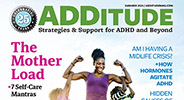How Deep Breathing Opens Up the ADHD Brain
Studies suggest that rhythmic, deep breathing exercises can balance the autonomic nervous system, which helps individuals with ADHD become more attentive and relaxed. Read more about this treatment here.

You have to breathe, so why not use your inhalations and exhalations to manage your ADHD symptoms? “Several studies show that rhythmic, paced breathing balances the autonomic nervous system,” says Richard Brown, M.D., associate clinical professor of psychiatry at Columbia University College of Physicians and Surgeons.
What does that mean to someone with ADHD? Deep breathing exercises can help you become more attentive and more relaxed at the same time.
Many of Brown’s patients with ADHD have benefited from coherent breathing — a term coined by author and yoga specialist Stephen Elliott because the technique synchronizes heart, lung, and brain rhythms.
Ethan, 10, has ADHD. He couldn’t sit still when doing homework, couldn’t fall asleep, and was difficult to manage. He experienced bad side effects from ADHD stimulants, and cognitive behavioral therapy didn’t work.
So Ethan’s mother, who had used coherent breathing to calm her own anxiety, taught him how to do it. His overall behavior improved in four or five weeks, and he fell asleep without difficulty. Whenever he felt stressed, or he felt like he wasn’t meeting expectations at school or at home — common occurrences for those with ADHD — he would do the breathing exercises, whether he was taking a test at school or not getting along with classmates.
[Get This Download: Make Mindfulness Work for You]
“The nice thing about coherent breathing is that, unlike yoga and exercise — both very good therapies for ADHD — it is portable and accessible,” says Brown. You can do it while you’re at the office, riding the subway, or even in school.
Your autonomic nervous system (ANS) has two components: a stress response and a recharge response. Adults and children with ADHD have nervous systems that are out of whack: Most of the time the stress and recharge responses are under-active. But when the stress response kicks in for an individual with ADHD, it goes into high gear, compared to those who don’t have the condition. For your brain to work better — and for you to be less impulsive and hyperactive — both components of the ANS need to work optimally and in the right balance. Coherent breathing can help accomplish these goals.
“Amazing things happen in the body and brain when you slow down your breathing to five or six full breaths a minute,” says Brown, who teaches a weekend course in coherent breathing. The heart, lungs, and blood vessels work more efficiently, delivering more oxygen to the body’s tissues and the brain. Parts of the brain that deal with complex problems begin to function better. Typically, you see a big change in brain-wave patterns — meaning more healthy alpha waves and fewer sleepy delta waves.
“People with ADHD feel a lot calmer, are better able to make good judgments, and are less easily frustrated,” says Brown.
[Get This Free Resource: Unraveling the Mysteries of Your ADHD Brain]
Learn Deep Breathing
For people with ADHD to master coherent breathing, it’s best to have some instruction. “An instructor can tell you whether your muscles are relaxed, and whether you’re breathing too deeply,” says Brown. “You can learn the technique in a weekend. The key is to practice at home for 10 to 20 minutes a day” — until it becomes an automatic response to stress and hyperactivity.
Find a quiet place to sit where you won’t be interrupted. Close your eyes, relax your eyes, neck, hands, and feet, and complete five or six full breaths in a minute, keeping your awareness on the breath moving inside of you.
One note: Practice coherent breathing when you’re calm. A lot of people say, “Oh, I’ll do it when I get stressed.” “That’s like waiting to brush your teeth after they’ve fallen out,” says Brown. “When you get upset with your boss, or when you lose your keys, you’ll have a head start at getting your calm and focus back if you’ve practiced. The technique becomes an almost automatic response when you find yourself in stressful situations.”
Calming Techniques for ADHD: Next Steps
- Read: Diaphragmatic Breathing for ADHD
- Listen: How to Use Mindfulness to Manage ADHD Symptoms
- Download: Make Mindfulness Work for You
SUPPORT ADDITUDE
Thank you for reading ADDitude. To support our mission of providing ADHD education and support, please consider subscribing. Your readership and support help make our content and outreach possible. Thank you.









